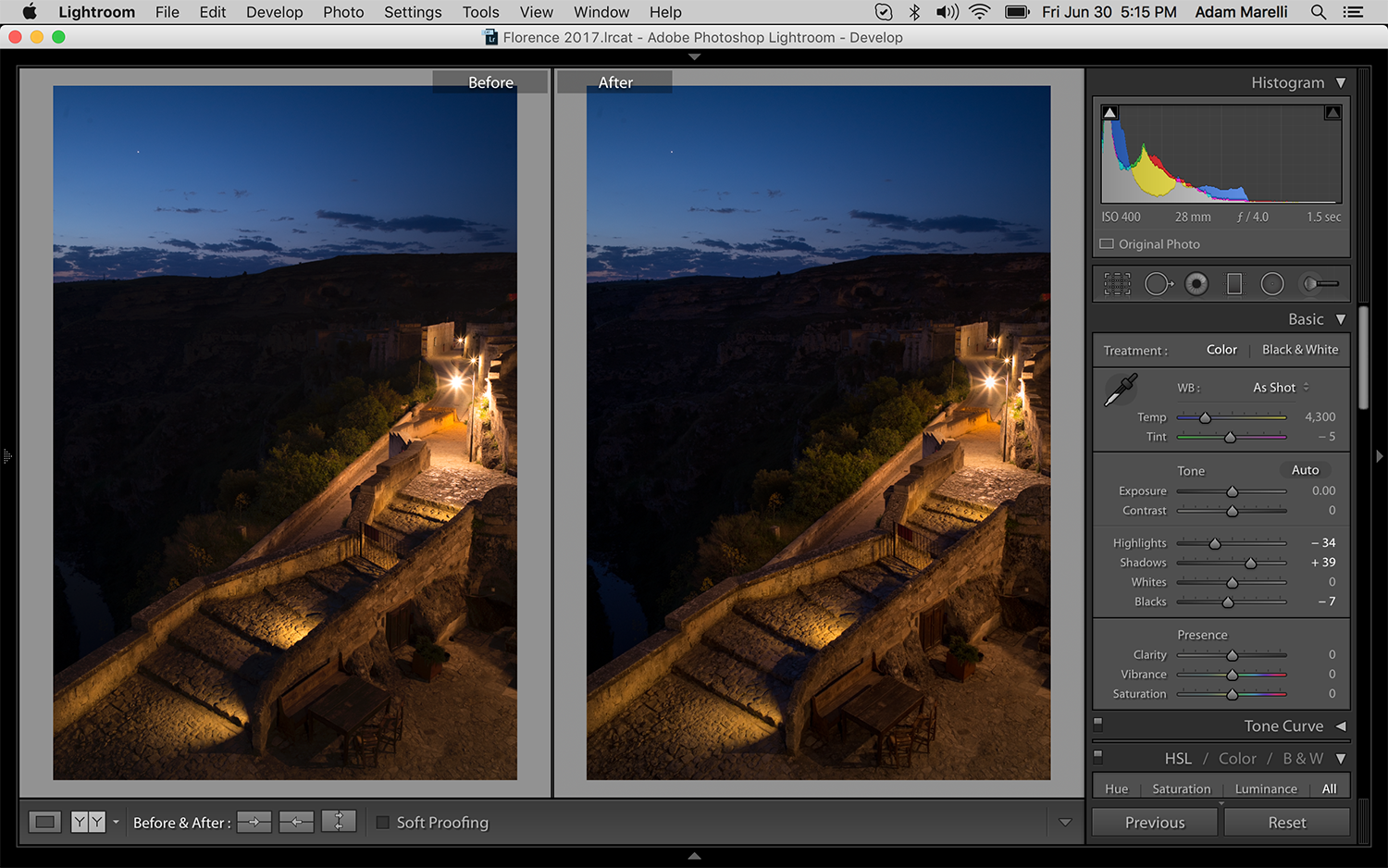
The other day a young photography student said to me, “I’m doing Photoshop classes online to work on my photography.”
I asked “Why?”
She was confused and thought all professional photographers use Photoshop. I went on to explain that I see editing like this:
Using Lightroom is like putting on makeup. A little accent here or there, but no major changes. Using Photoshop is like giving your picture plastic surgery. If it needs that much work, the picture is probably junk anyway.
This is not to say that Photoshop does not have its advantages … it does. However, it is not the type of thing that a beginner should mess with. One of the reasons old school photographers still push learning on film is because your editing options are limited. You have to get 90% of the shot right on film, otherwise it would never work. Working within these types of limitations is very helpful for beginners. In the early learning phases of shooting on all manual and basic editing, less is more. If you have a million Photoshop options available, it will be of little service to your ability to take a good picture. But why?
Comedian Bill Burr thinks plastic surgery is a bad idea. In one of his skits he asks, “Would you rather be 52 and look 52 or be 52 and look like a 28-year-old lizard?”
I’ve got to admit I feel the same way about loads of pictures. They just don’t work. But that doesn’t seem to stop people from Photoshopping them to death.
Regardless of whether you are a doctor, comedian, or an artist, you have some innate sense as to how things should look. From time to time, our eyes deceive us, but overall it is easy to spot something fake, especially on someone’s face or in a photo. It could be the ever-surprised-eyebrows or a photo where the colors look like they came from Mars. And in this case, coming from Mars is not a good thing. So how far should you go to create a visual effect? As photographers, it is a question we ask every time we sit down to edit. The challenge is that most of us edit with no one watching.
A workshop is a good opportunity to allow a group of people, who shot the same things as you did, to edit around you. This way it keeps everyone honest. If the edit looks too crazy, everyone is on it because they were in the same location. And this leads to the inevitable question of “Adam, how much work do you do on your pictures?”
For those of you who have not been on one of my workshops, I am an open book. I’m happy to edit live, show before and after shots from projects, and even show the ones that did not work out well. The goal is to show people what I think is a reasonable level of adjustment for a photo and allow them to ask all the questions they feel too embarrassed to pose online.
If I had to make an analogy between photo editing and plastic surgery, I’d say that:
• Editing should be like washing and moisturizing a face and maybe getting a little sun in the process.
• Editing should not be like plastic surgery’s apparent goal of creating a swath of expressionless-zombie-reptiles masquerading as 20-year-olds. This is the land of HDR and Photoshop.
This is one of the reasons I recommend Lightroom over Photoshop while you are learning … you can only go so far.
But why not do reconstructive surgery on a picture? I mean it is anyone’s creative outlet to decide how much work to do on a picture, right? Yes it is. But just because you can, does not mean you should, or that it is in good taste.
We all need to find our own rhyme and reason to making pictures. I will give you mine and you can draw from it what you need and discard what you don’t.
The big distinction I make is between finding and inventing. I enjoy that photography gets me out into the world. It requires that I leave the house and go see things. It is part of the fun, which is why I see it as a game of finding things. Inventing is the domain of the painter. At a blank canvas in the studio, I can invent things I’ve never seen.
Surrealist photographer and painter Man Ray had a great quote about the distinction between photography and painting:
I paint what cannot be photographed, that which comes from the imagination or from dreams, or from an unconscious drive. I photograph the things that I do not wish to paint, the things which already have an existence.
-Man Ray
In all of the pictures in this article you can see that the finished image is only a slight tweak from the original. There are no added light sources or major adjustments. Because the whole fun of taking pictures is finding scenes that are worth photographing. Most of the enjoyment is standing in the scene and taking the picture. Editing is just the icing on the cake.
And if you’re still laughing at the 28-year-old lizard, here are more of Bill Burr’s thoughts on plastic surgery.